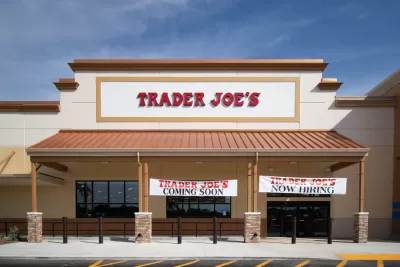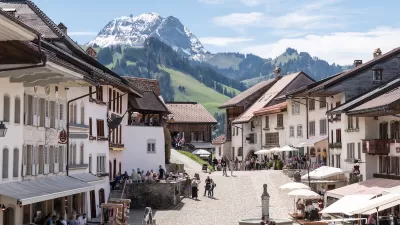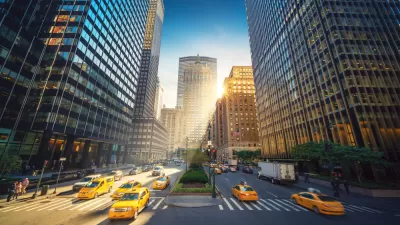The flawed logic behind an all-too-common planning misconception.

Writing in Strong Towns, Daniel Herriges warns against a common style of public comment that fails to grasp the realities of how development decisions are made. Herriges illustrates this genre of uninformed, self-serving comments as “The city should put a Trader Joe's there.”
As Herriges explains, “The reason the city can’t put a Trader Joe's there is because the city doesn't make that decision at all.” The process involves many more parties, such as the landowner and Trader Joe’s. And while rezoning processes often garner public attention, “it’s very rare that a local government actively recruits a specific business to occupy a site, let alone when that site itself is private property.”
While such complaints can largely be attributed to “simple ignorance,” Herriges writes, “there’s something deeper going on: a flaw in the basic mental model that people use to describe how their neighborhood takes shape.”
For Herriges, the problem rests in part on the assumption that there is a master planner or designer making decisions about how a city grows, even if that planner is some vague version of “the community” or “the city.” But most decisions are made by many individuals and entities with often disparate interests.
Ultimately, Herriges encourages people invested in the future of their communities to think about the specifics of what “we” and “they” mean in the urban planning and development context, what concrete outcomes they want to see, and how decisions about those outcomes are actually made.
FULL STORY: “The City Should Put a Trader Joe’s There” (and Other Muddled Thinking About Development)

Alabama: Trump Terminates Settlements for Black Communities Harmed By Raw Sewage
Trump deemed the landmark civil rights agreement “illegal DEI and environmental justice policy.”

Planetizen Federal Action Tracker
A weekly monitor of how Trump’s orders and actions are impacting planners and planning in America.

The 120 Year Old Tiny Home Villages That Sheltered San Francisco’s Earthquake Refugees
More than a century ago, San Francisco mobilized to house thousands of residents displaced by the 1906 earthquake. Could their strategy offer a model for the present?

Ken Jennings Launches Transit Web Series
The Jeopardy champ wants you to ride public transit.

BLM To Rescind Public Lands Rule
The change will downgrade conservation, once again putting federal land at risk for mining and other extractive uses.

Indy Neighborhood Group Builds Temporary Multi-Use Path
Community members, aided in part by funding from the city, repurposed a vehicle lane to create a protected bike and pedestrian path for the summer season.
Urban Design for Planners 1: Software Tools
This six-course series explores essential urban design concepts using open source software and equips planners with the tools they need to participate fully in the urban design process.
Planning for Universal Design
Learn the tools for implementing Universal Design in planning regulations.
Clanton & Associates, Inc.
Jessamine County Fiscal Court
Institute for Housing and Urban Development Studies (IHS)
City of Grandview
Harvard GSD Executive Education
Toledo-Lucas County Plan Commissions
Salt Lake City
NYU Wagner Graduate School of Public Service





























